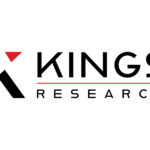Introduction
The Asia-Pacific functional safety products market is gaining momentum as industries in the region ramp up efforts to ensure operational safety, regulatory compliance, and system integrity. Functional safety refers to the part of the overall safety of a system or equipment that depends on automatic protection systems functioning correctly in response to inputs or failures. With increasing automation in sectors such as manufacturing, oil & gas, chemicals, pharmaceuticals, and energy, the demand for reliable functional safety products is growing rapidly.
Market Overview
As of 2024, the Asia-Pacific functional safety products market is valued at approximately USD 2.7 billion and is projected to grow at a compound annual growth rate (CAGR) of 8.6%, reaching USD 5.6 billion by 2033. The region’s rapid industrialization, growing implementation of Industry 4.0 technologies, and stringent safety regulations are fueling this upward trajectory. Countries like China, India, Japan, and South Korea are spearheading the adoption of functional safety measures to reduce risks and protect personnel and assets.
Key Market Drivers
Rising industrial automation across multiple verticals including automotive, electronics, and food & beverage
Increasing government mandates and international standards such as IEC 61508 and ISO 13849 for safety in industrial environments
Growing awareness about minimizing operational hazards, machine faults, and system failures
Expansion of smart factories and industrial IoT requiring advanced and integrated safety systems
Emphasis on workforce safety and risk assessment as companies adopt sustainable practices
Product Segmentation
Safety Sensors: These include proximity sensors, pressure sensors, and photoelectric sensors used for detecting hazardous conditions and triggering safety responses
Safety Controllers: Central processing units that interpret sensor data and control actuators to execute safety measures, often integrated into PLCs
Emergency Stop Devices: Manual controls designed to shut down operations immediately during emergencies
Safety Relays: Devices that monitor and control circuits, ensuring safe responses to potential faults or operational risks
Interlock Switches and Safety Light Curtains: Devices used to detect unauthorized access or human presence near dangerous equipment or zones
Programmable Safety Systems: Software-configurable safety platforms designed for complex machinery and automated environments
Application Areas
Manufacturing: Includes automotive, electronics, and heavy equipment industries where machine safety and operator protection are critical
Oil and Gas: Functional safety systems are used in drilling rigs, refineries, and pipelines to prevent catastrophic failures
Power and Energy: Ensuring safe operations in nuclear, thermal, and renewable energy plants through redundant and fail-safe systems
Pharmaceuticals and Chemicals: Safety products mitigate risks from hazardous substances and high-pressure processing environments
Food and Beverage: Safety systems maintain product quality while protecting workers from high-speed machinery and packaging equipment
Technological Advancements
Integration of functional safety with Industrial Internet of Things (IIoT) for real-time monitoring, diagnostics, and data analytics
Development of compact and modular safety systems that are easier to install and scale across varying operations
Introduction of wireless safety devices that enhance flexibility and reduce cabling complexity
Adoption of artificial intelligence and machine learning to predict failures and enable condition-based maintenance
Enhanced cybersecurity measures in functional safety systems to protect against digital threats targeting control systems
Regulatory Environment
Regulations and standards such as IEC 61508 (Functional Safety of Electrical/Electronic/Programmable Electronic Safety-related Systems), ISO 13849 (Safety of Machinery), and IEC 62061 are being increasingly adopted across Asia-Pacific. Regional authorities in countries like Japan, China, South Korea, and Australia are actively aligning local safety laws with global standards to ensure interoperability and international trade compliance.
Challenges in the Market
High initial investment required for implementing comprehensive functional safety systems, particularly in small and medium enterprises
Lack of skilled professionals and awareness in some parts of Asia-Pacific, limiting deployment in certain sectors
Complex integration with legacy machinery and production lines that were not designed for advanced safety protocols
Variability in safety standards across countries complicating regional harmonization and cross-border implementations
Regional Insights
China dominates the regional market with large-scale automation in its manufacturing sector and growing investments in smart factories. Government policies promoting safety and modernization in industrial zones are boosting adoption
India is emerging as a high-growth market due to expanding infrastructure, increasing awareness of occupational safety, and government-led initiatives like “Make in India” driving modernized production setups
Japan and South Korea are mature markets with advanced industrial bases and a strong emphasis on precision and safety, particularly in automotive, electronics, and robotics industries
Southeast Asian countries such as Indonesia, Thailand, and Vietnam are witnessing steady growth due to rapid industrialization and increasing FDI in manufacturing
Competitive Landscape
Major players in the Asia-Pacific functional safety products market include Siemens AG, ABB Ltd., Rockwell Automation, Schneider Electric, Mitsubishi Electric, SICK AG, Omron Corporation, Pilz GmbH & Co. KG, Pepperl+Fuchs, and Banner Engineering. These companies focus on R&D, product innovation, and regional partnerships to offer tailored solutions that meet local safety standards and customer requirements.
Future Outlook
The Asia-Pacific functional safety products market is set to witness significant advancements over the next decade. Growth will be supported by increasing digitalization, rise in factory automation, and strategic emphasis on risk management and sustainability. Companies will invest in smart safety systems integrated with AI, robotics, and cloud platforms to ensure continuous and predictive protection. As regulatory frameworks become more unified and safety becomes an essential operational pillar, demand for advanced functional safety products will continue to surge across industries.
Source: https://www.databridgemarketresearch.com/reports/asia-pacific-functional-safety-products-market
Conclusion
The Asia-Pacific functional safety products market is at the forefront of industrial transformation, balancing productivity with protection. As industries embrace automation, digital control, and connected environments, the need for reliable safety systems becomes critical. With increasing regulatory support, rising investments, and a strong drive for innovation, the region is poised to become a global leader in functional safety adoption and technology development.



